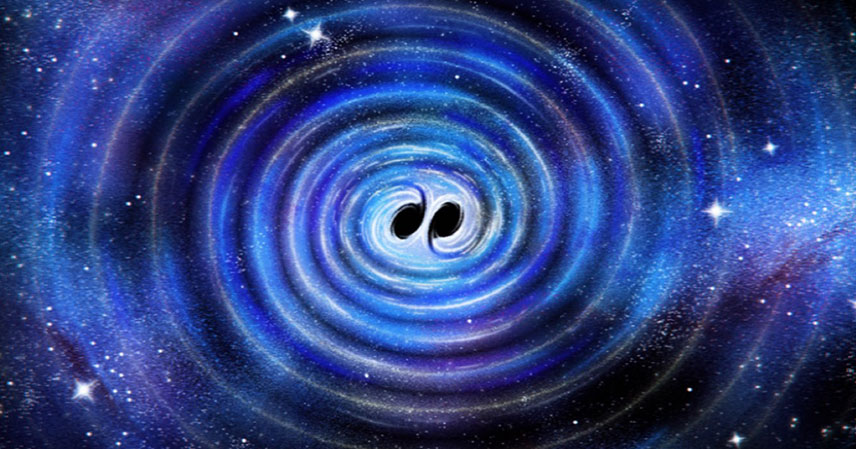For decades, Stephen Hawking’s area theorem, a cornerstone of black hole physics, remained a theoretical marvel. It posited that the surface area of a black hole can only increase or stay the same, never decrease. Now, a groundbreaking analysis of gravitational waves from a black hole merger offers the most compelling observational evidence yet to support this profound prediction. This discovery, timed perfectly with the 10th anniversary of the first black hole merger detection, marks a significant leap forward in our understanding of the universe’s most enigmatic objects.
This isn’t just another scientific confirmation; it’s a testament to the power of collaborative global science and the remarkable sensitivity of gravitational wave detectors. The implications stretch far beyond theoretical physics, offering new insights into the dynamics of black hole collisions and the very fabric of spacetime.
What Happened? 📝
The recent breakthrough stems from the analysis of gravitational waves detected in January 2024 from a colliding pair of black holes. These ripples in spacetime, predicted by Einstein’s theory of general relativity, carry invaluable information about the violent events that create them. By meticulously studying the characteristics of these waves, scientists were able to confirm that the surface area of the resulting, merged black hole was indeed larger than the sum of the individual black holes’ surface areas – a direct verification of Hawking’s area theorem.
The research, published in Physical Review Letters, details the rigorous calculations and data analysis that led to this conclusion. This evidence provides a crucial link between theoretical predictions and real-world observations, solidifying our understanding of black hole mergers and their impact on the cosmos.
The LIGO/Virgo/KAGRA Collaboration 🔭
This monumental achievement is a direct result of the collaborative efforts of the LIGO/Virgo/KAGRA (LVK) collaboration. This international network of scientists utilizes highly sophisticated laser interferometers to detect the minuscule changes in spacetime caused by gravitational waves. These detectors, located in the United States, Italy, and Japan, work in concert to triangulate the source of these waves, allowing for more precise measurements and analysis.
The success of LVK underscores the importance of global scientific cooperation. By pooling resources and expertise, scientists are able to tackle some of the most challenging questions in physics, pushing the boundaries of our knowledge and understanding of the universe.
Gravitational Waves: Messengers from the Cosmos 🌌
Gravitational waves are ripples in spacetime caused by extremely violent cosmic events, such as the collision of black holes or neutron stars. These waves travel at the speed of light, carrying information about the events that created them, including the mass, spin, and distance of the objects involved. Detecting these waves is incredibly challenging, requiring extremely sensitive instruments capable of measuring changes far smaller than the width of a proton.
The detection and analysis of gravitational waves represent a revolutionary new way to study the universe. They provide a unique window into events that are otherwise impossible to observe directly, offering invaluable insights into some of the most extreme phenomena in the cosmos.
Hawking’s Area Theorem Explained 🧮
Stephen Hawking’s area theorem, proposed in 1971, is a fundamental principle in black hole physics. It states that the surface area of the event horizon (the point of no return for a black hole) can never decrease over time. This is a remarkable statement about the laws of physics in extreme gravitational environments. While initially a theoretical concept, this new research provides strong observational support for its validity.
The theorem has significant implications for our understanding of black hole thermodynamics and the laws of physics in the extreme conditions near a black hole. It highlights the interconnectedness of gravity, thermodynamics, and quantum mechanics.
Key Takeaways 🔑
- The recent detection of gravitational waves from a black hole merger provides strong observational evidence supporting Stephen Hawking’s area theorem.
- The LIGO/Virgo/KAGRA collaboration, a global network of scientists, played a crucial role in this discovery.
- Gravitational waves offer a unique window into the most extreme events in the universe, providing invaluable data for scientific research.
- Hawking’s area theorem has profound implications for our understanding of black hole thermodynamics and the laws of physics.
- This breakthrough underscores the importance of international scientific collaboration in advancing our knowledge of the cosmos.
The confirmation of Hawking’s area theorem represents a significant milestone in gravitational wave astronomy. It not only validates a decades-old prediction but also opens up new avenues for research, promising further breakthroughs in understanding the universe, including other great puzzles like the mystery of the universe’s missing antimatter. The future of gravitational wave astronomy is bright, with ongoing improvements to detector sensitivity and the addition of new detectors promising even more exciting discoveries in the years to come.



